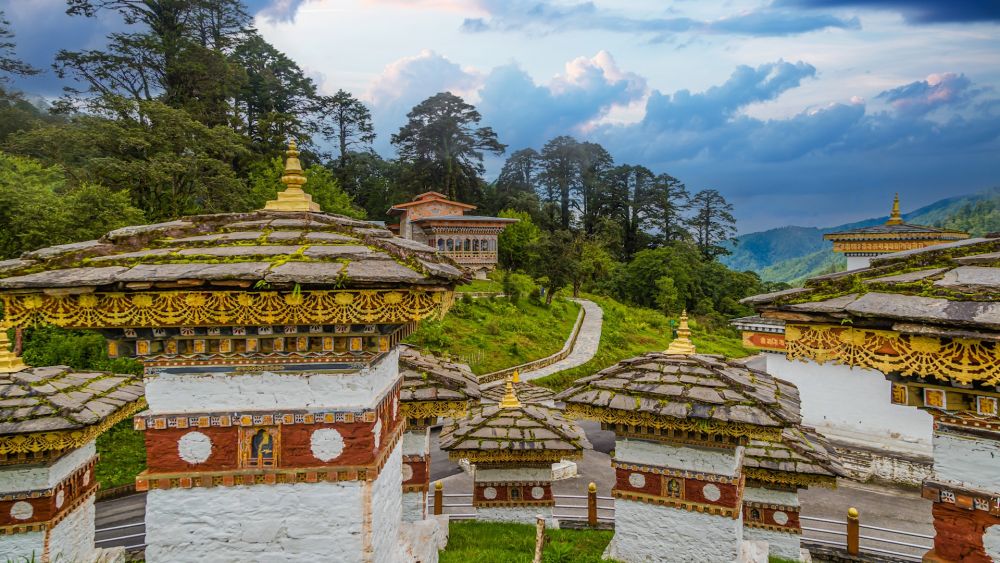

The Dochu La Pass, situated in the magnificent Himalayan landscape of Bhutan, has a relatively short but vibrant history with regards to tourism. Historically, Bhutan remained in self-imposed isolation, preserving its traditions and environment from the external influences. It was not until 1974, during the coronation of the fourth king, that Bhutan officially opened its doors to tourism. Since then, Dochu La Pass, along with other parts of Bhutan, began receiving international attention as a unique travel destination.
Strategically located at an altitude of 3,100 meters, the Dochu La Pass is not merely a route connecting Bhutan's capital Thimphu to Punakha but a destination in its own right. The pass became accessible to tourism with the advent of better road connectivity catering to those who journey through the central regions of Bhutan. The iconic 108 chortens known as "Druk Wangyal Chortens" and the Druk Wangyal Lhakhang temple, built in the honor of the Bhutanese soldiers, have been focal points for visitors since their completion in the early 2000s.
Dochu La Pass offers an intriguing combination of natural beauty, spiritual significance, and historical intrigue. One significant attraction is the breathtaking panoramic view of the Himalayan mountain range, which on clear days provides visibility of peaks such as Mount Masanggang (also known as Mt. Gangkar Puensum), the highest unscaled peak in the world. The pass is also adorned by vibrant prayer flags that flutter with the mountain breeze, invoking peace, compassion, and wisdom.
Visitors are often drawn to the serenity and architectural beauty of the Druk Wangyal Chortens and the temple, representing the rich religious heritage of Bhutan. The site of the chortens also hosts the annual Druk Wangyal Festival, a distinctive event presenting Bhutanese culture and traditions through local music, dance, and folklore.
In recent years, Bhutan has focused on promoting sustainable and high-value tourism, which aligns with the kingdom's philosophy of Gross National Happiness. The country has adopted policies aimed at controlling the number of visitors to mitigate the negative effects of mass tourism while ensuring a unique and high-quality experience for travelers.
Eco-tourism and wellness travel have gained prominence, with visitors seeking trekking adventures, spiritual retreats, and authentic cultural interactions. Dochu La Pass, with its tranquility and natural splendor, fits perfectly into this tourism model, offering chances for reflective hikes and photography tours that maintain an eco-friendly approach.
With the rise of digital nomadism and the quest for offbeat travel experiences, Dochu La Pass has seen a surge in popularity among tourists desiring remote, less crowded destinations. This trend is likely to continue growing, with more travelers looking to discover the less traversed paths and hidden gems of Bhutan.
As tourism in Bhutan evolves, Dochu La Pass remains a testament to the nation's commitment to preserving its environment and cultural heritage while sharing it thoughtfully with the world. The development of tourism infrastructure is carefully balanced with conservation efforts to ensure that this enchanting region retains its magic for generations to come.